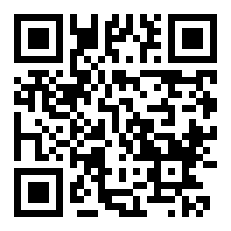Haemoglobin Levels Regulate Hepcidin Production in Late Pregnancy
Keywords:
hepcidin, ferritin, pregnancy, anaemiaAbstract
Background: Hepcidin production is regulated by factors including plasma iron levels, inflammation, anaemia and hypoxia. In late pregnancy, hepcidin level is remarkably low. This study assesses the dominant factors regulating hepcidin production in late pregnancy.
Aim and Objectives: To evaluate the relationship between hepcidin levels, haematological parameters and body iron stores in late pregnancy.
Materials and Methods: Ten millimeters of venous blood was taken from 120 apparently healthy pregnant women between 28 weeks gestational age and delivery, to determine their haemogram, reticulocyte count; and plasma ferritin, C-reactive protein, and hepcidin concentrations. All patients with chronic illnesses and on-going inflammatory conditions were excluded.
Results: One hundred and twenty pregnant women were recruited, sixty were anaemic and sixty were non-anaemic, with mean age 26.98±4.24years vs 28.40 ± 3.60 years, t = 75.9, p<0.001. The haemoglobin concentration (8.50 ± 0.68g/dl vs 10.8 ± 0.73g/dl; F=339.0, p < 0.001), absolute reticulocyte count (19.2 ± 8.55 x109/L vs 31.8 ± 8.68 x109/L; F=61.995, p<0.001), plasma ferritin (15.4 ± 7.88ng/ml vs 23.74 ± 17.1ng/ml; F=11.75, p=0.001) and hepcidin levels (509.8 ± 297 pg/ml vs 657.9 ± 255 pg/ml; F=8.59, p=0.004) were significantly lower in the anaemic group compared to the non-anaemic group. Of all the measured parameters, haemoglobin concentration (r = 0.379; p<0.003) and plasma ferritin (r = 0.409, p = 0.001) in the anaemic group correlated significantly with hepcidin value.
Conclusion: This study confirms that plasma ferritin as well as haemoglobin concentration significantly regulate hepcidin production in late pregnancy in this cohort of patients.
Downloads
References
Sangkhae V, Nemeth E. Regulation of the iron homeostatic hormone hepcidin. Adv Nutr An Int Rev J. 2017; 8(1):126–36.
Mitchell C, Shawki A, Ganz T, Nemeth E, Mackenzie B. Functional properties of human ferroportin, a cellular iron exporter reactive also with cobalt and zinc. AJP Cell Physiol. 2014; 306(5):450–59.
Smithers L, Gialamas A, Scheil W, Brinkman S, Lynch J. Anaemia of pregnancy, perinatal outcomes and children’s developmental vulnerability: A whole-of-population study. Paediatr Perinat Epidemiol. 2014; 28(5):381–90.
Milman N, Taylor C, Merkel J, Brannon P. Iron status in pregnant women and women of reproductive age in Europe. The Amer Jour of clin nutr. 2017; 106:1655–62.
UNCF. Iron deficiency anaemia: assessment, prevention and control. A guide for programme managers. WHO Guidel. 2001; 4–114.
Okafor IM. Prevalence of iron deficiency anaemia among pregnant women in Calabar, Cross River State Nigeria. IOSR J Pharm Biol Sci. 2013; 7(2):60–4.
Mihiretie H, Motuma A, Bacha C. Magnitude of anaemia and associated factors among pregnant women attending antenatal care in Nekemte health center, Nekemte, Ethiopia. J Med Microbiol diagnosis. 2015; 197:3–5.
Tunkyi K, Moodley J. Prevalence of anaemia in pregnancy in a regional health facility in South Africa. SAMJ - South African Med J. 2016; 106(1):101–4.
Ross S, Tran L, Winters A, Lee K, Plewa C, Foltz I, et al. Molecular mechanism of hepcidin-mediated ferroportin internalization requires ferroportin lysines, not tyrosines or JAK-STAT. Cell Metab. 2012; 15(6):905–17.
Kroot J, Tjalsma H, Fleming R, Swinkels D. Hepcidin in human iron disorders: Diagnostic implications. Clin Chem. 2011; 57(12):1650–69.
WHO. Serum ferritin concentrations for the assessment of iron status and iron deficiency in populations. Vitam Mineal Nutr Inf Syst. 2011; WHO/NMH/NH: 1–5.
Federal Republic of Nigeria. National population commission. In: National population and housing census: priority table. 2006.
Vyas S, Kapoor A, Nema S, Suman S. Quantification of serum hepcidin as a potential biomarker in diagnosis of iron deficiency anaemia. Int J Res Med Sci. 2017; 5(7):2926–30.
Han Li, Su-Juan Feng, Lu-Lu Su, Wei Wang, Xiao-Dong Zhang, Shi-Xiang Wang. Serum hepcidin predicts uremic accelerated atherosclerosis in chronic hemodialysis patients with diabetic nephropathy. Chinese J Med. 2015;128(100:1350-7
Ganz T, Nemeth E. Hepcidin and Disorders of Iron Metabolism. Annu Rev Med. 2011; 62(1):347–60.
Ganz T, Nemeth E. Hepcidin and iron homeostasis. Biochimica et Biophysica Acta - Molecular Cell Research. 2012; 1828:1434–43.
Petkova-Marinova T, Ruseva B. Relationship of hepcidin levels to parameters of iron metabolism during pregnancy. Arch Balk Med Union. 2015; 50(2):258–61.
Koenig M, Tussing-humphreys L, Day J, Cadwell B, Nemeth E. Hepcidin and iron homeostasis during pregnancy. Blood. 2014; 3062–83.
Van-Santen S, Kroot J, Zijderveld G, Wiegerinck E, Spaanderman M, Swinkels D. The iron regulatory hormone hepcidin is decreased in pregnancy: a prospective longitudinal study. Clin Chem Lab Med. 2013; 51(7):1395–1401.
Mohammad ES, Mohammad BA. Hepcidin status correlated with biochemical parameters and haematological indices among iron deficient anaemic children aged (6-12) years in Gaza city: A case control study. J Nat Eng Stud. 2014; 22(2):12–16.
Tabinda N. Association of cord hepcidin and iron parameters with maternal hepcidin, iron status markers and neonatal morphometrics. Pakistan J Physiol. 2018; 14(2):7–10.
Kerry JS, Parul CR. Hepcidin and iron status among pregnant women in Bangladesh. Asian Pacific J Clin Nutr. 2008; 17(3):451–56.
Bah A, Sant-Ryan P. Serum hepcidin concentrations decline during pregnancy and may identify iron deficiency: analysis of a longitudinal pregnancy cohort in the Gambia. J Nutr. 2017; 147(6):1131–37.
Kautz L, Jung G, Valore E, Rivella S, Nemeth E, Ganz T. Identification of erythroferrone as an erythroid regulator of iron metabolism. Nat Genet. 2014; 46(7):65–71.
Downloads
Published
Issue
Section
License
Copyright (c) 2023 Nigerian Journal of Haematology

This work is licensed under a Creative Commons Attribution-NonCommercial-NoDerivatives 4.0 International License.








